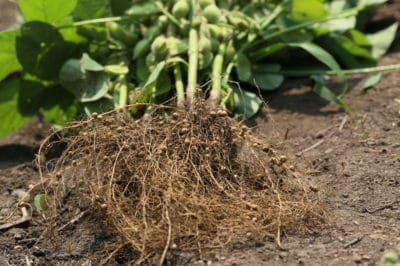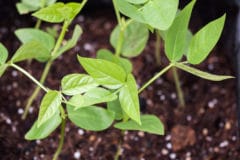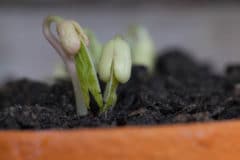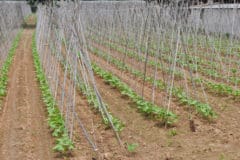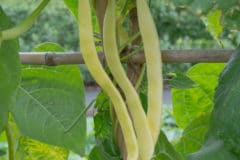Root Depth
Although many people consider beans to be shallow-rooted, that’s not really correct. The mass of the root ball varies according to variety. Pole and bush snap (green or string) beans usually have a root ball that extends about 18 to 24 inches into the ground. However, the deep feeder roots may reach 36 to 48 inches into the soil. Lima bean roots – both bush and pole varieties – can grow more than 48 inches long.
Nitrogen Fixing
Bean plants are beneficial to the soil. Bean roots have nodules of tissue along their length. Most of the nodules are concentrated around the main root. Soil-dwelling bacteria extract nitrogen from the air and “feed” it to the bean roots, which store the nitrogen in the nodules. When you harvest bean plants, it is better to cut the plant off at ground level. This leaves the nitrogen in the ground.
Edible Bean Roots
In addition to their pods, some beans also produce edible roots. These include:
- Potato bean or ground nut – a perennial plant used by Native Americans in a manner similar to the potato.
- Runner beans – these plants have showy flowers and edible beans, as well as starchy, edible roots.
- Hyacinth beans – these have very showy purple, pink or white flowers (the main reason they are planted) as well as edible roots.
Insects and Bean Roots
The larvae of bean leaf beetles will bore into the plant roots. However, root knot nematodes are the insects most likely to attack bean roots. These tiny worm-like insects live in the soil. They are most severe in sandy soils and can cause considerable damage. Nematodes also leave holes in the root tissue through which diseases can enter. Companion planting with scented marigolds in both the previous and current season may decrease nematode populations.
Diseases of Bean Roots
Root rots and fungus are the most common disease problems in bean roots. The most common fungi to affect bean roots are Fusarium, Rhizoctonia or Pythium species. The fungi can persist in the soil for years, living on decomposing vegetation from previous crops. Unfortunately, there are no effective organic fungicides for this problem. Crop rotation is one of the best means of preventing disease. Don’t over-water as it may encourage disease.
